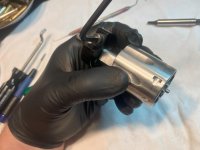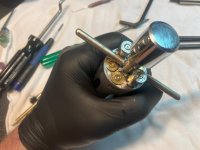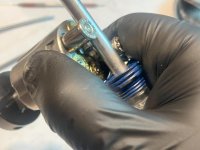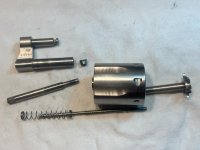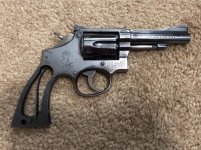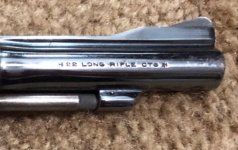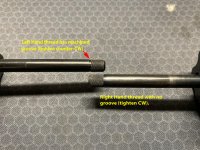max503
Member
My Model 18 is from 1958. I just reamed the cylinders. I'm thinking of running some cold blue down the chambers on a Q-tip. But first I want to degrease the cylinders with some gun scrubber.
I put 6 empties in the charge holes then clamped the ejector rod in a wood clamp. (My instructions say to do this with the cylinder/crane assembly together.) I cannot turn the cylinder clockwise with my hand strength. I didn't try real hard. It was greasy.
What's next? Spray some liquid Wrench down the center hole and give it a soak?
Maybe skip the touch-up blue?
I put 6 empties in the charge holes then clamped the ejector rod in a wood clamp. (My instructions say to do this with the cylinder/crane assembly together.) I cannot turn the cylinder clockwise with my hand strength. I didn't try real hard. It was greasy.
What's next? Spray some liquid Wrench down the center hole and give it a soak?
Maybe skip the touch-up blue?

